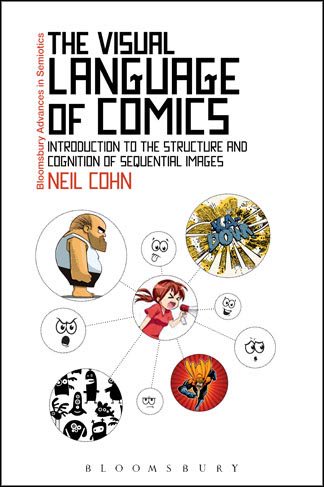
A few days ago @matt_thorn_en had an excellent thread about layouts in manga. Here I want to expand on that, from the perspective of cognition and psychology. It may surprise people, but there’s been actual science done on the rules of #comics page layouts…
As explained in that thread, manga readers use meeting points between panels to signal whether to read horizontally or vertically. These are cued by "T" shapes or "+" shapes between panels 

As described in my book and some papers, these panel junctions do indeed give readers layout cues, and we've articulated these rules explicitly. But, they are just the to deeper strategies... visuallanguagelab.com/vloc.html 



Really, readers are trying to create groupings of panels into rows and columns, and it’s the desire for these groupings that really drives how people navigate layouts. People don't just bounce between junctions, but they are guided by this underlying desire to create groupings 

I call this guiding principle “Assemblage” and it has four main rules:
1. Grouped areas > ungrouped areas
2. Smooth reading paths > broken paths
3. Don’t jump over panels
4. Don’t leave gaps
frontiersin.org/articles/10.33…
1. Grouped areas > ungrouped areas
2. Smooth reading paths > broken paths
3. Don’t jump over panels
4. Don’t leave gaps
frontiersin.org/articles/10.33…

If you follow these Assemblage rules when creating/reading a page layout, you end up with groupings that embed inside each other. We can characterize these groupings by drawing hierarchic “trees”: rows embedded into columns and vice versa visuallanguagelab.com/vloc.html 

Here’s how the structure looks for one of the pages that @matt_thorn_en posted. You can see that the junctions are actually cues for bigger groupings which each embed inside each other 



Readers unconsciously want to create these groupings while reading, which is why they use the junctions between panels. This is especially true in layouts violating the “Z-path” order of text, particularly what I’ve called “Blockage”, where you stack panels vertically 



Here, the panel borders give cues that push you around, depending on how well contiguous the panel borders are. But, it’s not “all or nothing” and seems to be a gradual influence thevisuallinguist.com/2015/03/new-pa… 

I’ve written at length about how blockage is not a confusing layout, as some claim thevisuallinguist.com/2016/08/dispel… 

And our recent study (soon to be written up on my website) shows data that blockage appears more frequently in manga than both American and European comics (coded in 60 comics, 7,600 panels) tandfonline.com/doi/abs/10.108… 

However, blockage has somewhat been on the rise in American superhero comics over the past 80 years. We know this because we’ve coded comics layouts from 1940-2010 (9,000+ panels in 40 books) thevisuallinguist.com/2016/11/new-pa… 

Even so, though it appears more in manga than American comics, readership of manga does not seem to differ for how people choose panel orders in blockage situations. We’ve found no correlations in any study between manga readership and blockage ordering frontiersin.org/articles/10.33…
This is different from experiments where we clearly show manga reading influences brain responses to narrative patterns which are found more in manga than Western comics thevisuallinguist.com/2017/05/new-pa… 

So, the underlying rules that people use to navigate comics pages are the same across types of comics (*mostly), but those books may use different patterns in their layouts tandfonline.com/doi/abs/10.108…
All of this here is based on actual science, either coding comics or running experiments. While there is theory here, it’s informed by actual data from years of research. And none of this is "settled"—there's still much to be done
But, we’ve done experiments on nearly all aspects of comics, from layout and storytelling, to symbology and text-image relationships. There’s actual science on all this stuff described in numerous papers all available here visuallanguagelab.com/papers.html
…and much of it is found in my book The Visual Language of Comics, which just reached its 4th anniversary of being released (Japanese edition coming soon!) 😀 visuallanguagelab.com/vloc.html 

P.S. If you're jazzed about the idea of science about comics... we have an online study going on *right now*! Read a comic for science! tilburghumanities.eu.qualtrics.com/SE/?SID=SV_bpb…
• • •
Missing some Tweet in this thread? You can try to
force a refresh


